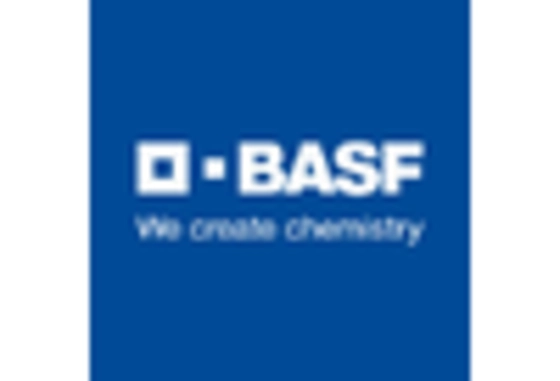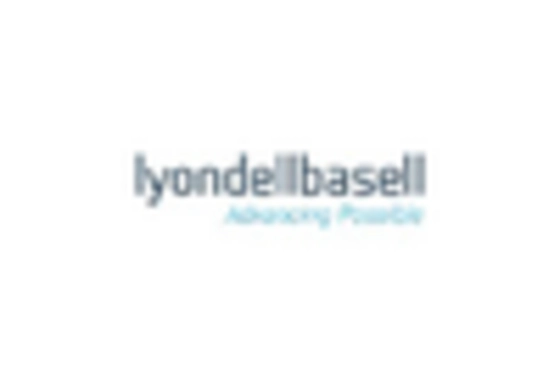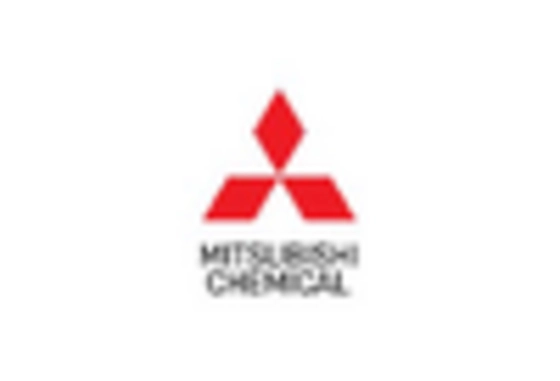Supportive Regulatory Frameworks
The establishment of supportive regulatory frameworks is a significant driver for the Synthetic Bio Based Butadiene Market. Governments worldwide are increasingly implementing policies that promote the use of bio-based chemicals as part of their commitment to reducing greenhouse gas emissions. For example, regulations that incentivize the production and use of renewable materials are becoming more prevalent. This regulatory support not only encourages investment in bio-based technologies but also fosters innovation within the industry. As a result, the Synthetic Bio Based Butadiene Market is likely to benefit from enhanced market access and reduced barriers to entry. The alignment of regulatory frameworks with sustainability goals is expected to catalyze growth in the production and consumption of synthetic bio-based butadiene.
Investment in Research and Development
Investment in research and development (R&D) is a critical driver for the Synthetic Bio Based Butadiene Market. Companies are increasingly allocating resources to R&D to enhance the efficiency and sustainability of bio-based production processes. This focus on innovation is likely to yield breakthroughs that improve yield rates and reduce production costs. For instance, recent studies indicate that R&D investments in bio-based technologies could lead to a 25% increase in production efficiency over the next five years. Furthermore, collaboration between academic institutions and industry players is fostering the development of new applications for synthetic bio-based butadiene. As R&D continues to advance, it is expected to play a vital role in shaping the future landscape of the Synthetic Bio Based Butadiene Market.
Rising Demand for Sustainable Products
The increasing consumer preference for sustainable products is a pivotal driver in the Synthetic Bio Based Butadiene Market. As environmental awareness grows, industries are compelled to adopt eco-friendly alternatives to traditional petrochemical products. This shift is evidenced by a projected increase in demand for bio-based chemicals, which is expected to reach USD 20 billion by 2026. Companies are now prioritizing sustainability in their product offerings, leading to a surge in the production of synthetic bio-based butadiene. This trend not only aligns with consumer values but also enhances brand loyalty, as consumers are more inclined to support companies that demonstrate a commitment to environmental stewardship. Consequently, the Synthetic Bio Based Butadiene Market is likely to experience robust growth as manufacturers respond to this demand.
Technological Innovations in Production
Technological advancements play a crucial role in shaping the Synthetic Bio Based Butadiene Market. Innovations in fermentation technology and metabolic engineering have significantly improved the efficiency of bio-based butadiene production. For instance, recent developments in synthetic biology have enabled the conversion of renewable biomass into butadiene with higher yields and lower costs. This has the potential to reduce production costs by up to 30%, making synthetic bio-based butadiene more competitive against conventional butadiene. Furthermore, the integration of automation and data analytics in production processes enhances operational efficiency, thereby attracting investments into the Synthetic Bio Based Butadiene Market. As these technologies continue to evolve, they are expected to drive further growth and adoption of bio-based alternatives in various applications.
Growing Applications in Automotive and Plastics
The expanding applications of synthetic bio-based butadiene in the automotive and plastics sectors are driving growth in the Synthetic Bio Based Butadiene Market. As the automotive industry shifts towards more sustainable materials, bio-based butadiene is increasingly utilized in the production of synthetic rubber and plastics. This trend is underscored by the fact that the automotive sector is projected to account for over 30% of the total demand for butadiene by 2027. Additionally, the versatility of synthetic bio-based butadiene allows for its use in various plastic products, further broadening its market appeal. As industries seek to reduce their carbon footprint, the demand for bio-based alternatives is expected to rise, thereby propelling the Synthetic Bio Based Butadiene Market forward.

















Leave a Comment